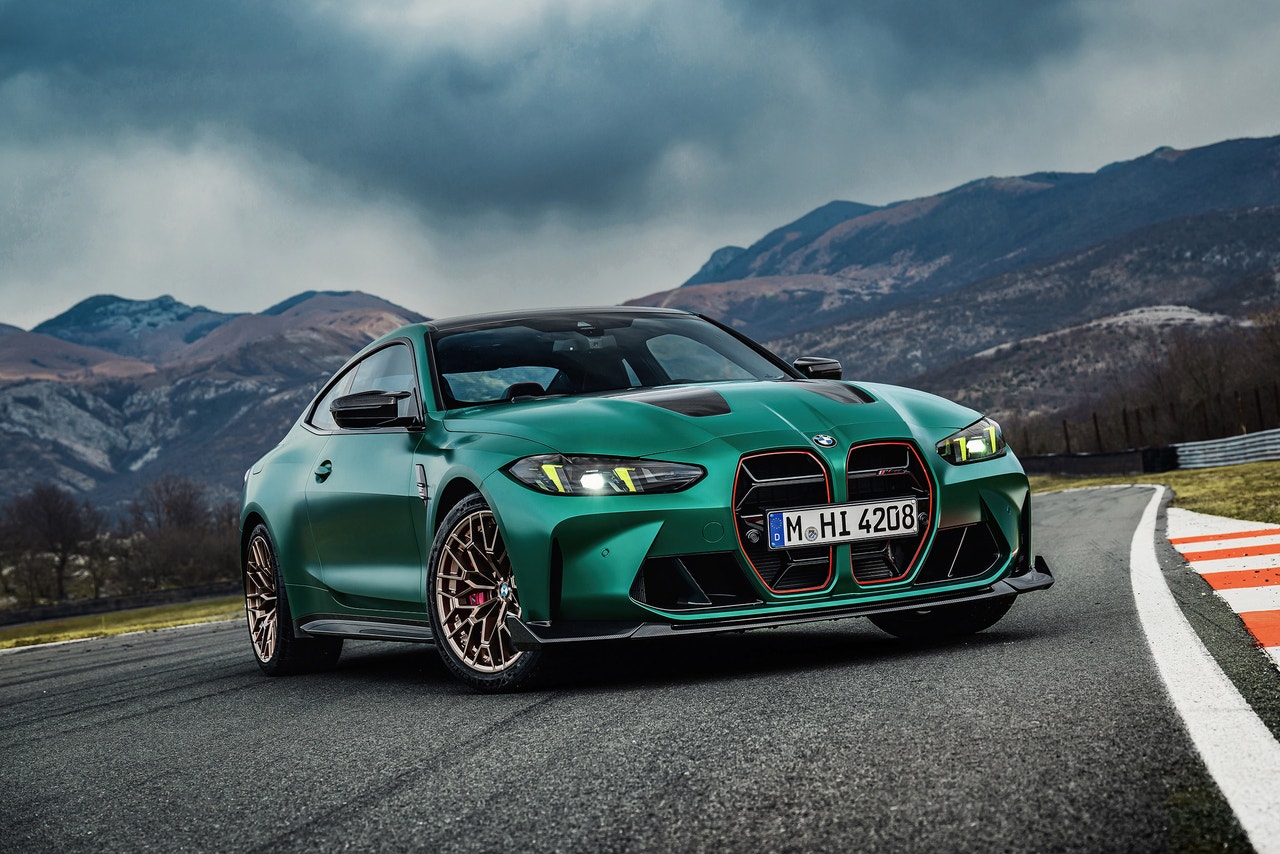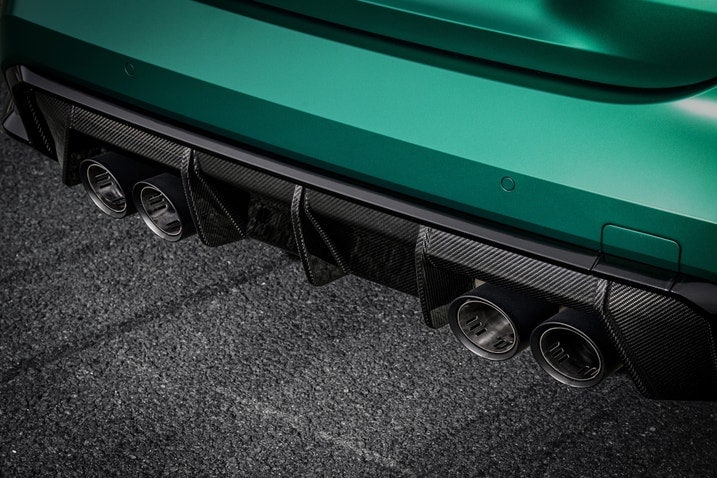- The CS is more usable and comfortable than the M4 CSL, but still wicked fast.
- Armed with CSL-matching muscle under hood: 543 horsepower and 479 lb-ft of torque.
- Limited production; expect around 350 examples to make it to U.S. dealerships.
2025 BMW M4 CS First Drive: Hardcore Performance You Can Actually Live With
Here's why we'd buy the M4 CS over the M4 CSL
If you missed your chance to snatch up one of the 1,000 examples of BMW's M4 CSL available worldwide, fret not. I'm here to tell you that the new 2025 BMW M4 CS is the better car to own.
The CS is still plenty fast
The M4 CSL logged an official Nürburgring Nordschleife lap time of 7 minutes and 18.137 seconds, the quickest time of any production BMW before it. The M4 CS managed an official time of 7 minutes and 21.99 seconds around the 12.9-mile track, trailing the CSL by less than 5 seconds. In the grand scheme of things, that's pretty close.
Although I didn't lap the Nordschleife, I was fortunate to grab some track time in the CS at the Salzburgring in Austria, which features a fun variety of corners from fast-flowing bends to tighter esses and banked downhill decreasing-radius turns. Here, the CS easily proved itself a legitimate track weapon, especially when equipped with Michelin Pilot Sport Cup 2 R tires (a no-cost option).
The amount of customizable drive settings in BMW M cars has always felt a bit like thumbing through a 42-page restaurant menu. The options are overwhelming, but if you're using your M car as a dual-duty track and daily driver, the flexibility of it all begins to make a lot more sense. Virtually all of the systems in the CS, from the adaptive suspension to the steering, braking, and even all-wheel-drive system receive CS-specific tuning.
The M xDrive system, when set to 4WD Sport mode, works to route as much of the 543 horsepower and 479 lb-ft of torque to the rear wheels first. That's a prodigious amount of twist even for sticky track tires. Only when the system determines there's too much torque for the rear axle to utilize does it start sending power to the front axle. The electronically controlled M differential handles torque distribution between the rear tires while the front brakes help shunt power to whichever front wheel has more grip by limiting the slip of the spinning wheel. In some cases where you have a lot of tight corners and would benefit from a more front-power bias, choosing the standard 4WD setting could be preferable.
This entire process happens so quickly and transparently, it makes the M4 CS feel like it has the lighter front-end balance and maneuverability of a rear-drive car, but with the added confidence and drive out of a corner that comes from all-wheel drive. And when you layer on the safety net of BMW's M Dynamic mode, which allows for fairly generous amounts of yaw before reining things in, you end up with a car you can jump into and almost instantly go fast in, feeling like the hero you always knew you were.
Where I found the CS a bit lacking is in steering feel. The ratio is quick and accurate but the front end doesn't communicate quite as well as other sports cars, even a Mazda MX-5 Miata. There were a handful of heavy braking sections on track where I had the chance to really put the M4 CS' optional carbon-ceramic brakes to the test (sadly not a no-cost option), and they worked beautifully, lap after lap. Naturally, there are multiple brake settings, the sportiest of which dials up the response curve of the brake pedal for spirited driving. This allows you to get to max braking quicker and without much pedal effort or drama, helping you stay nice and relaxed when flirting with the limits of grip.
The CS is much more practical
Part of the CSL's slight lap performance advantage is its better power-to-weight ratio. The CS and CSL share the same twin-turbo 3.0-liter inline-six engine making exactly the same 543 hp and 479 lb-ft of torque, mated to the same excellent eight-speed automatic transmission, but the CSL weighs 262 pounds less than the CS. The CS sheds about 77 pounds itself compared to an M4 Competition Coupe xDrive, thanks to extensive use of weight-reducing carbon fiber-reinforced plastic that's replaced parts from the hood, roof, seats, and other various components plus a titanium exhaust muffler that shaves 8 pounds off the back end.
The additional weight savings of the CSL don't simply come from throwing more carbon fiber into the mix. The biggest weight-loss contributors to its track-body diet came from yanking out the two rear seats, which are actually quite reasonably sized for accommodating two adult-size friends, and foregoing BMW's M xDrive all-wheel-drive system. Sure, the "purists" may favor the CSL's simpler rear-drive-only setup, but they should also know that the CS shaves 0.4 second off the CSL's already quick 0-to-60-mph time, getting it done in a scant 3.2 seconds (according to BMW estimates). The CS' M xDrive doesn't just help produce mind-blowing launch times; if you live anyplace where the road and weather conditions aren't perfect year-round, the added stability of all-wheel drive will likely come in handy then, as well.
The CS is far more comfortable to live with
I'll admit that the rear ducktailed decklid of the CSL is pretty darn cool and makes it instantly recognizable. With it being made of CRFP, it saves a bit of weight as well. Beyond the exterior bits, some of the other places the CSL saves weight at the cost of some comfort is a lack of sound deadening, which makes for a noisier cabin, and its ultra-lightweight fixed-back carbon bucket seats.
The CS' carbon sport seats aren't the same dedicated fixed buckets you'll find in the CSL, so you can still dial in some recline for some added cruising comfort and adjust the seat height if you can't comfortably see over the dash. I still don't love the carbon-fiber thigh divider that protrudes from the center of the bottom cushion and find the bolsters a bit narrow, but the seats overall are much easier to live with compared to the CSL's, and they still do an excellent job of holding you in place.
Earlier I mentioned that many things on this car received a CS-specific tune. That holds true for the CSL as well, meaning things like suspension and bushings get extra serious. The CSL's lower ride height, firmer springs, stiffer gearbox mounting, pillow ball mount rear suspension, and stiffer antiroll bars all work to minimize free play, which usually adds up to more precision and speed on the track but also means a lot less dampening of things on less-than-perfect roads. I don't doubt that some people would embrace the raw experience the CSL delivers on public roads, but it's not something I'd personally want to deal with every day.
The CS is (slightly) more affordable and available
With the base BMW M4 coming in at around $80,000, a $140,000 CSL is a tough pill to swallow. The CS, by comparison, is still no bargain at $124,675, but considering what you get and how much more usable it is than a CSL, it's definitely the model I'd go with between the two.
As for allocation, BMW says that roughly every U.S. dealership should be getting one M4 CS. Depending on which Google source you trust, I'd estimate anywhere around 350 or so CS models will be up for grabs. That means you can stop pondering that used CSL purchase and get yourself something you'd actually enjoy driving every day instead.










 by
by  edited by
edited by